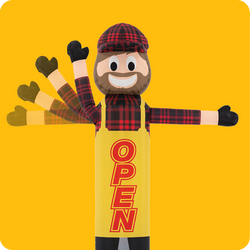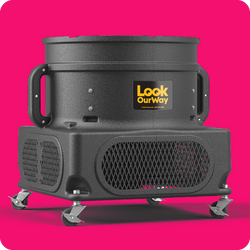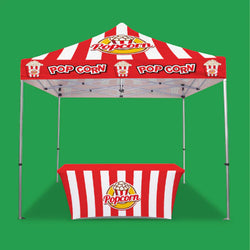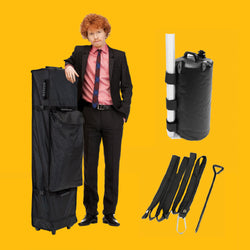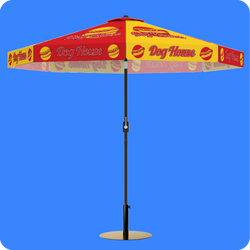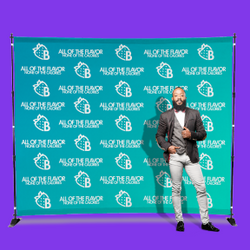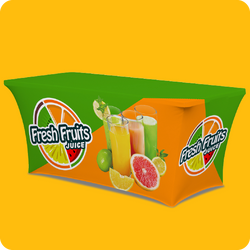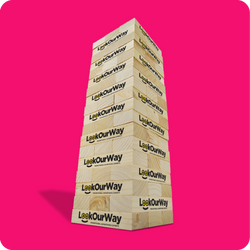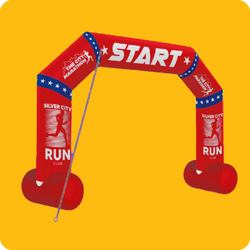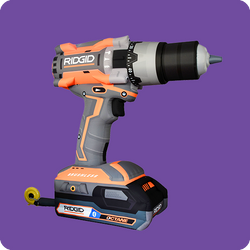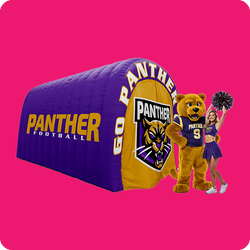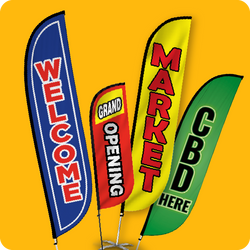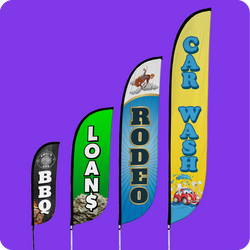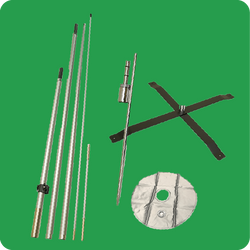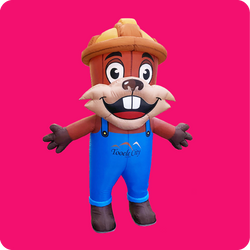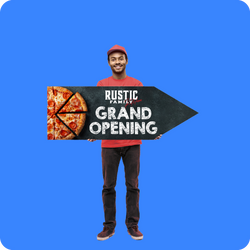Street Team Marketing: Build Brand Engagement

Street Team Marketing: Build Brand Engagement on the Ground
Street marketing works because people remember people. When someone hands you a sample, shares a brand story, or gives you a smile in the middle of a crowded street, it stays with you. It's not a billboard. It's not an ad in your feed. It's face-to-face and real.
If you're trying to build brand awareness, attract potential customers, or drive foot traffic to a pop-up, this is one of the most effective marketing tactics. It's especially effective in busy cities like New York or Los Angeles, where attention is a prize.
In this guide, you'll learn what street team marketing is, how to build your own, and how to run a campaign that sticks.
What Is Street Team Marketing?
Street marketing is face-to-face. It involves real people on the ground talking to real people. These street team members become ambassadors.
Their job is to connect with your target audience in high-traffic public spaces: sidewalks, parks, trade shows, and busy corners in NYC, Los Angeles, or San Francisco.
This kind of brand activation started in the music scene. Bands used it to build buzz, hand out flyers, and grow loyal fans. Now it's everywhere, from product sampling at pop-ups to giveaways outside a packed event.
At its core, it's grassroots marketing. You meet passersby where they are. You use conversation, energy, and simple promotional materials to share your brand message. Some campaigns include branded gear or staffing agencies that manage everything for you. Others are small and scrappy. Both work.
Unlike digital marketing tactics, a street team operates in person and in real time. The goal is clear: spark attention, raise brand awareness, and get people talking online and offline.
Street Team Marketing vs. Traditional Advertising
Billboards blur into the background. Banner ads get blocked. Social media scrolls by in seconds. But street team marketing makes people stop.
You stand in front of your target audience in person, hand them something, smile, and say the brand message, and it sticks.
Unlike digital ads, a street team marketing campaign delivers higher engagement rates. People remember face-to-face interactions. They don't swipe past them. And the cost per impression is lower. You don't need to chase clicks. You get real responses in real time.
A successful street team uses the human touch where algorithms can't reach. Grassroots marketing, product sampling, and pop—up giveaways turn passersby into potential customers. In NYC or Los Angeles, foot traffic becomes a built-in audience.
Traditional marketing tactics rely on attention. Street team promotions earn it.
You also get clarity on your brand conversation. You'll see who stops, track coupon redemptions, and watch word-of-mouth unfold on the sidewalk.
Digital noise is everywhere. A well-trained team in branded gear can cut through it. That's the power of experiential marketing on the street.
How to Build an Effective Street Team Marketing Plan
Street team marketing works best when you plan it with care. This is where the groundwork happens—before the gear, before the giveaways, before the boots hit the pavement.
Start With a Simple Goal
What do you want this street team marketing campaign to do? Grow brand awareness? Drive foot traffic to a pop-up shop? Collect real-time sign-ups? Pick one clear goal.
Let it guide every step you take. Use it to pick your locations, shape your messaging, and set your marketing metrics.
Tie this goal to your bigger marketing strategy. Your team is building a story your target audience will remember and maybe share on social media.
Know Your Audience First
Before you hit the streets, learn who you're trying to reach. Not just age or income. What do they care about? What neighborhoods do they walk through? What kind of activation will stop them in their tracks?
This is your core. Every product sampling, every brand ambassador, every interaction depends on understanding the people you want to connect with.
Choose the Right Locations
Where your street team stands makes or breaks the effort. Public spaces with high traffic matter. Think events, trade show areas, and busy spots in New York City or San Francisco.
But don't just pick where people go. Choose where your potential customers pause. It could be outside a gym, near a campus, or by a subway exit. Good marketing tactics always meet the moment.
Build a Strong Message
Your brand message needs to be clear, short, and human. Think about what you want people to hear and remember after 10 seconds of face-to-face interaction.
This message should appear on everything: your branded shirts, promotional materials, and giveaways. A successful street team says one thing well because repetition builds memory.
Recruit the Right Street Team Members
People buy from people. Your team should match your brand's tone. Friendly. Sharp. Curious. You can work with a staffing agency or hire your own team if you're running frequent campaigns.
Train them like they're your frontline marketers because they are. Show them what the product means. Teach them how to listen and give them a reason to care.
Equip Your Team With Tools
Give your street team the materials they need to start real conversations. Branded swag, sample kits, signage, and QR codes are just the beginning. These tools spark action: scans, sign-ups, and photos.
Make it easy for passersby to interact on the spot and share the moment online.
Add Smart Tracking Methods
You can't improve what you don't track. Use coupon codes, trackable links, and custom hashtags to measure the impact of your campaign. Good grassroots marketing includes simple metrics that prove value.
If your campaign runs in multiple cities, like NYC, Los Angeles, or San Francisco, organize data by location. This will help you spot patterns and make smarter decisions next time.
Prepare for the Budget Reality
Every marketing campaign comes with costs for gear, event staffing, permits, and promotional materials. Break your budget into essentials and extras.
You don't need everything to start. A small street team in one high-traffic area can still make a strong impression. Many brands reduce overhead by hiring students or working with experienced freelance brand ambassadors.
Plan Your Activation Timeline
Start your launch date and move backward. Book public spaces, set up your product shipment, and finalize your signage. Let your street team rehearse the script.
Leave room for mistakes and weather delays. Grassroots marketing works best when you're ready for real life.
Grassroots Marketing Examples That Made an Impact
Here are examples that turned public spaces into powerful brand moments.
Corona's Karaoke Wall - Mexico City |
A blank wall, a mic, and a crowd. Corona turned a street corner into a live karaoke stage. Passersby became performers. Each song was filmed and shared on social media, and word-of-mouth did the rest. It was a simple brand activation that felt real and unforgettable. |
Spotify Wrapped Murals - Los Angeles |
Spotify painted massive "Spotify Wrapped" murals across public spaces in LA. The murals featured real users' listening stats. People stopped, took photos, and tagged their friends. It was part guerrilla marketing, part social proof. It turned user data into street art and got thousands of shares. |
Glossier's Pop-Up in San Francisco |
Glossier launched a minimalistic pink pop-up in a busy San Francisco neighborhood. Inside, street team members guided visitors through samples. Outside, the brand used branded giveaways and photo stations to boost brand awareness. The pop-up became a magnet for influencers and everyday shoppers alike. |
Malibu Rum's Sampling Truck - Summer Tour |
Malibu Rum rolled a branded truck across summer beach towns. Inside: product sampling, palm-themed giveaways, and instant photo prints. Every stop brought the brand closer to its target audience. The truck carried a full marketing campaign on wheels. |
Giant Inflatables at a Pop-Up Festival |
At an outdoor summer event, a wellness brand used a Look Our Way Air Wavers® inflatable tube man to mark its booth. The waving figure stood ten feet tall, drawing foot traffic from across a busy plaza. The inflatable sparked smiles, selfies, and user-generated content that boosted brand awareness in real time. |
Custom Trade Show Booth that Pops |
At a health expo in Los Angeles, a small supplement company installed a 10 x 10 FastZip™ tension fabric trade show booth from Look Our Way. The sleek backdrop and integrated media stand offered a clean, professional canvas. It helped turn passersby into potential customers, face-to-face, demo to demo, conversation to conversation. |
Feather Flags Outside a Campus Event |
During a college fair in Charleston, brand ambassadors carried custom feather flags, each emblazoned with a bright message and logo. Positioned at high-traffic walkways, these flags made the brand visible from afar. To feed the buzz, the team handed out flyers and samples. This drove foot traffic and sparked social media posts about the brand's vibrant street team promotion. |
Canopy Tent and Inflatables for Community Outreach |
In San Francisco, a nonprofit hosted a block party with a custom canopy tent paired with a giant inflatable arch marking the entrance. The branded space drew families in. Team members used pop-up giveaways and product sampling to start conversations. Cars pulled over, and curious passersby became loyal customers and supporters. |
Tips for Managing a Successful Street Team Campaign
Keep Gear Light, Clear, and Branded
Street team marketing depends on fast setups and quick impressions. Choose promotional materials that are bold and easy to carry. Branded feather flags, giveaway bags, or teardrop banners make a strong visual mark in public spaces. Make it easy for passersby to understand what you're offering in seconds.
Use Real-Time Feedback Loops
Street team marketing works best when you adjust as you go. Track what questions people ask. Pay attention to what makes them stop and what makes them walk away. Collect real-time notes from your team. Use those insights to tweak your pitch or shift your location for better foot traffic.
Support Your Team On the Ground
Great event staff need great support. If your campaign runs for hours or days, ensure your street team members have what they need. Water, snacks, rest spots, and rotating shifts help them stay sharp. The better they feel, the better your brand activation performs.
Watch the Weather and Flow
If you're in NYC, Los Angeles, or San Francisco, outdoor campaigns come with city energy and city weather. Always scout your location ahead of time. Be aware of traffic patterns, public space rules, and crowd movement. Grassroots marketing lives and dies by timing and flow.
Start Your Street Team Marketing Campaign Today
Your target audience is out there walking city streets, standing in line, and scrolling through their phones. They crave real moments, face-to-face interactions, and a reason to stop, look, and remember your brand.
You need a smart plan, bold visuals, and the right tools. Giant inflatables, custom canopy tents, air dancers, feather flags: all turn public spaces into live brand activations.
Explore inflatable advertising or get a 1-hour free design mockup.
It begins with a single step. Take yours today!

